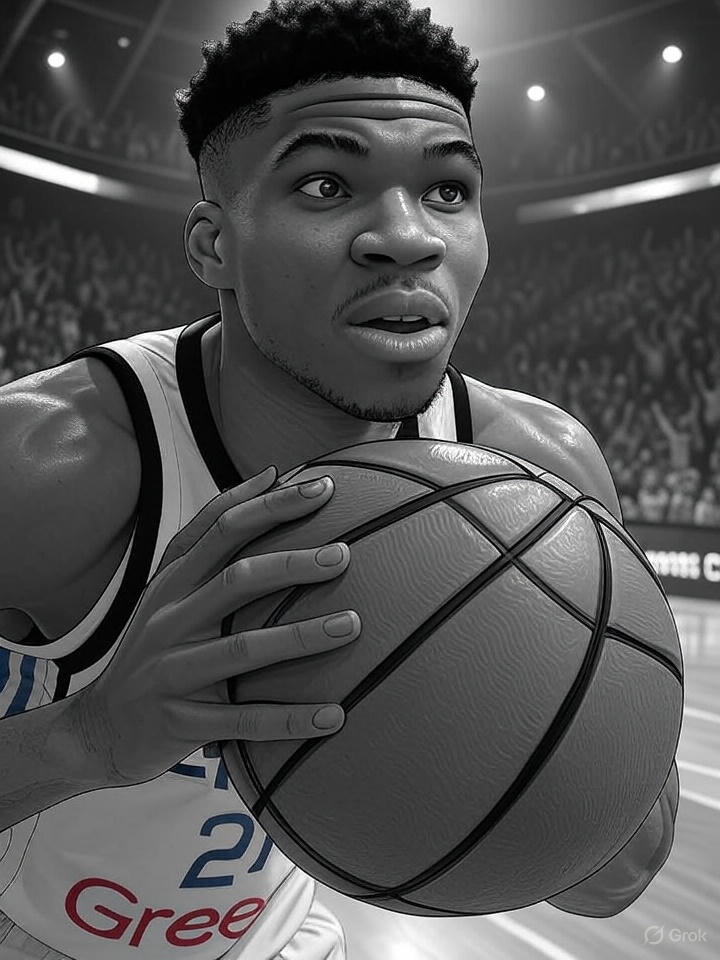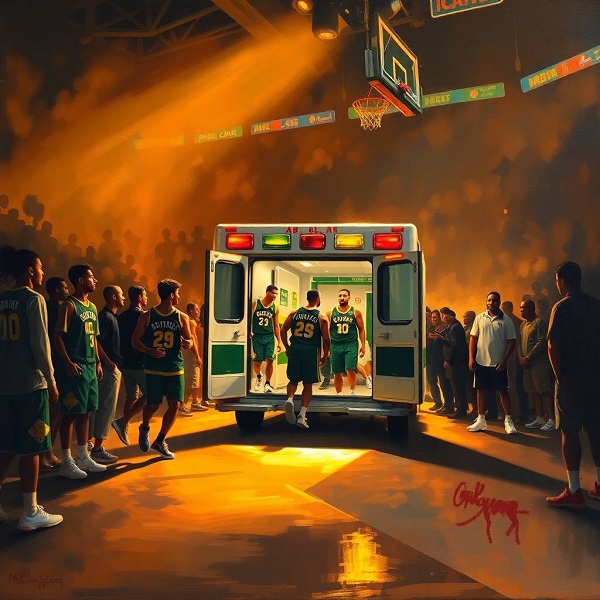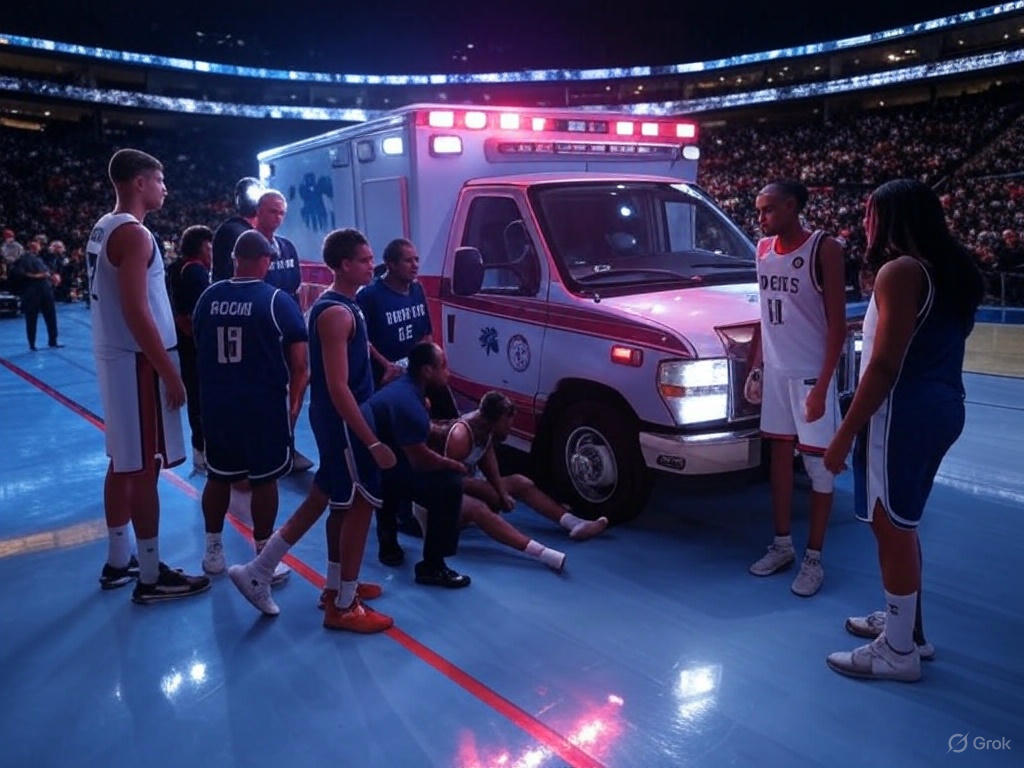I have analysed in detail how Giannis is the definition of a stat padder in the NBA. Click here to read it if you are not convinced, the man is literally in the definition of the term in Wikipedia. But today’s matchup against Georgia on August 31, 2025, raises some serious questions about his approach to these games. Greece cruised to a lopsided 94-53 victory, marking their third straight win in Group C and solidifying their status as group favorites. Yet, in what was essentially a glorified exhibition against an undermanned opponent, Giannis put up monster numbers: 27 points, 8 rebounds, 4 assists, and 2 steals in just 25 minutes of action. Impressive on paper, sure. But let’s call it what it is – blatant stat padding in a game that was never in doubt, all while unnecessarily risking injury ahead of a grueling NBA campaign.
The Game Breakdown: A Rout from the Jump
From the opening tip, this contest was mismatched. Greece jumped out to a 22-13 lead after the first quarter, thanks in large part to Giannis and teammate Konstantinos Mitoglou combining for the team’s first 14 points. By halftime, the score ballooned to 46-29, with Giannis already dropping 16 points alongside Mitoglou’s 15 – the duo alone outscoring Georgia’s entire team in the first half. The third quarter saw Greece extend their dominance to 69-41, and the final period was pure garbage time, ending in a 41-point blowout that ties for one of the largest margins in recent EuroBasket history.
Georgia, to their credit, was severely handicapped. Their NBA center Goga Bitadze – a former Bucks teammate of Giannis – didn’t play at all, leaving them without a true rim protector to challenge the Greek star inside. Captain Tornike Shengelia, another key veteran, was limited to just four minutes early on, further tilting the scales. Without these anchors, Georgia’s defense was porous, allowing Giannis to feast on easy drives, transition buckets, and even a perfect 1/1 from beyond the arc. He shot an efficient 8/10 on two-pointers and went 8/13 from the free-throw line, padding his totals with minimal resistance.
The progression tells the story of a non-competitive affair. Greece’s defense forced turnovers early (five steals in the first quarter alone), leading to fast breaks that Giannis converted effortlessly. By the end of the third, the game was so out of reach that coach Vassilis Spanoulis could have – and should have – kept his star on the bench. Instead, Giannis was subbed back in with 4:52 left in the fourth, adding a couple of free throws before finally being pulled for good. Why? The outcome was sealed. This wasn’t about winning; it was about numbers.
The Stat Padding Argument: Chasing Glory in Garbage Time
Look, Giannis is a generational talent, and his raw stats today are undeniable. But context matters. In a blowout like this, where Greece led by double digits from the first quarter and never looked back, there’s no need for your MVP-caliber player to log 25 minutes – especially when he returned in the fourth for what amounted to mop-up duty. This smacks of stat padding: intentionally staying in or re-entering a decided game to inflate personal lines.
Compare this to his approach in previous games. Just yesterday, against Cyprus, Giannis sat out entirely, allowing Greece to still win comfortably and move to 2-0. That was smart load management. Against Italy earlier in the tournament, he played 29 minutes and dropped 31 points in a closer 75-66 win – a scenario where his full effort was warranted. But Georgia? This was a team missing key players, struggling offensively (they scored just 53 points total), and posing zero threat. Giannis could have capped his night at 20 minutes with, say, 20 points, and no one would have batted an eye. Instead, he pushed for 27, including those late free throws, in what feels like a quest for headlines and highlight reels.
Critics might say he’s just competitive, playing hard regardless of the score. Fair point, but at what cost? Stat padding isn’t new in basketball – we’ve seen it from stars chasing triple-doubles or scoring titles. For Giannis, who already has two MVPs and a Finals ring, these international stats boost his legacy narrative. But in a tournament like EuroBasket, where Greece is favored to advance deep, why not preserve energy for tougher matchups ahead, like potential clashes with Spain or Italy?
The Injury Risk: Playing with Fire for No Reason
Here’s where it gets reckless. Giannis is no stranger to injuries. He’s dealt with knee issues, back problems, and various tweaks over his NBA career, missing chunks of seasons that have impacted the Bucks’ playoff runs. International play adds extra mileage – more games, travel, and physicality without the NBA’s load management protocols. In a meaningless blowout against Georgia, every extra minute on the court is a needless gamble.
Imagine this: A freak ankle roll in the fourth quarter while chasing a loose ball, or a hard foul from a frustrated Georgian player trying to make a statement. Boom – season derailed before it starts. The Bucks, who pay him over $48 million annually, must be sweating every time he suits up for Greece. And for what? To turn a 30-point lead into 41? The risk-reward ratio is absurdly skewed. EuroBasket is important for national pride, but Giannis’ health is paramount for his NBA legacy and Greece’s long-term success. Sitting out the Cyprus game showed he knows how to rest; applying that here would have been prudent.
This isn’t just hypothetical. We’ve seen stars like Joel Embiid or Kawhi Leonard manage minutes meticulously to avoid injury. Giannis, at 30 years old and with a history of wear and tear, should follow suit. Playing hero ball in a rout doesn’t make him tougher; it makes him vulnerable.
Despite the 27 points, 8 rebounds, and 4 assists, a few cracks in his game stood out, particularly his struggles at the free-throw line and a couple of lapses that could raise eyebrows.
- Poor Free-Throw Shooting: Giannis went 8/13 from the free-throw line, a subpar 61.5% clip. For a player who draws contact and gets to the line frequently – especially in blowouts where fouls pile up – this inefficiency is glaring. Missing five free throws in a game where he only took 11 total shots (10 two-pointers, 1 three-pointer) meant he left easy points on the table. This echoes his career-long struggle, with a 70.3% NBA free-throw average, and could hurt Greece in tighter games against stronger EuroBasket foes. In fact this season in the NBA he shot his worse 3pt% and ft% in his career.
- Unnecessary Fourth-Quarter Minutes: While not a statistical negative, Giannis’ decision (or the coaching staff’s) to return in the fourth quarter of a decided game was questionable. With Greece up by over 30 points, his brief stint to add free throws felt like chasing stats rather than preserving energy. This choice risked injury and showed a lack of discipline in managing his workload.
- Limited Playmaking: Despite his 4 assists, Giannis could have done more to involve teammates in a game where Georgia’s defense collapsed early. His focus on scoring – particularly in transition and isolation – occasionally overshadowed opportunities to set up players like Konstantinos Mitoglou, who was hot early. In a blowout, leaning harder into playmaking could have further elevated Greece’s team chemistry.
Wrapping It Up: Time for Smarter Choices
Giannis Antetokounmpo’s performance today was dominant, no doubt – 27 points on efficient shooting, leading Greece to an easy win and keeping them atop Group C. Fans ate up the highlights, and social media buzzed with praise. But beneath the glamour, this game exposes a flaw: a tendency to pad stats in low-stakes scenarios, putting his body on the line for diminishing returns. Greece didn’t need him in the fourth; the tournament doesn’t hinge on one blowout’s margin. As EuroBasket progresses, Giannis should prioritize preservation over padding. His talent is too valuable to waste on games like this. Bucks fans, Greek supporters, and basketball purists alike should hope he dials it back – before an injury forces him to.




